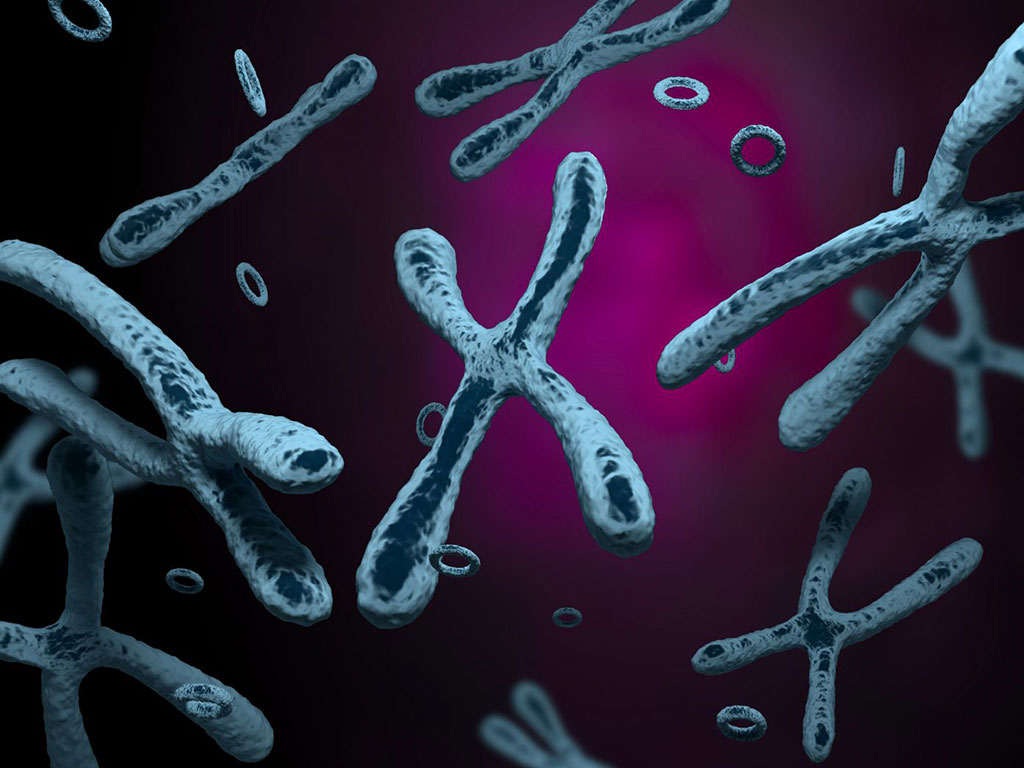Method Enables Targeted Profiling of Human Extrachromosomal DNA
Posted on 05 Dec 2022
Oncogene amplification is a key cancer-driving mechanism and frequently occurs on circular extrachromosomal DNA (ecDNA). ecDNA oncogene amplifications are present in half of human cancer types and up to one-third of tumor samples and are associated with poor patient outcomes.
Given the prevalence of ecDNA in cancer, there is an urgent need for better characterization of unique genetic and epigenetic features of ecDNA to understand how it may differ from chromosomal DNA and obtain clues about how it is formed and maintained in tumors.

A large team of Molecular Geneticists led by those at Stanford University (Stanford, CA, USA) used CRISPR-CATCH, a CRISPR-Cas9-based method that was previously developed for isolating bacterial chromosomal segments. Mechanistically, CRISPR-CATCH works by in vitro CRISPR-Cas9 treatment followed by pulsed-field gel electrophoresis (PFGE) of agarose-entrapped genomic DNA. The method starts by embedding the genomic sample in agarose plugs to prevent DNA shearing. Then the encapsulated sample is treated with CRISPR-Cas9 and a single guide RNA (sgRNA), which will make a precise cut to linearize the ecDNA.
The investigators reported that overall, the study showed that CRISPR-CATCH led to "massive enrichment" of the ecDNA. In particular, when the team tested CRISPR-CATCH targeting the EGFR locus on patient-derived glioblastoma neurosphere (GBM39) cells, the method enriched the ecDNA by 30-fold, resulting in ultrahigh sequencing coverage downstream. Similarly, the authors demonstrated that CRISPR-CATCH can also isolate targeted ecDNAs on flash-frozen patient tumor samples. In addition, the study showed that CRISPR-CATCH enabled the team to study ecDNA epigenomic profiles, such as DNA cytosine methylation (5mC), when paired with nanopore sequencing. It also enabled them to identify the chromosomal origins of ecDNA by phasing the oncogenic variants.
Howard Chang, MD, PhD, a Professor of Genetics and senior author of the study, said, “Extrachromosomal DNA represents a really important challenge for cancer patients. A lot of the most important cancer-causing genes are transcribed from extrachromosomal DNAs. Right now, we rely on cancer whole-genome sequencing data, which obviously is routinely done for cancer patients, so we know what the focal amplification is and that guides the targeted cutting. There might be a way to even bypass that step in the future.”
The authors concluded that they have demonstrated that ecDNA profiling using CRISPR-CATCH can provide insights into ecDNA structure, diversity, origin and epigenomic landscape. As such, CRISPR-CATCH presents an opportunity for a multitude of molecular studies that will help elucidate how ecDNA oncogene amplifications are regulated in cancer cells. The study was published on October 17, 2022 in the journal Nature Genetics.
Related Links:
Stanford University













